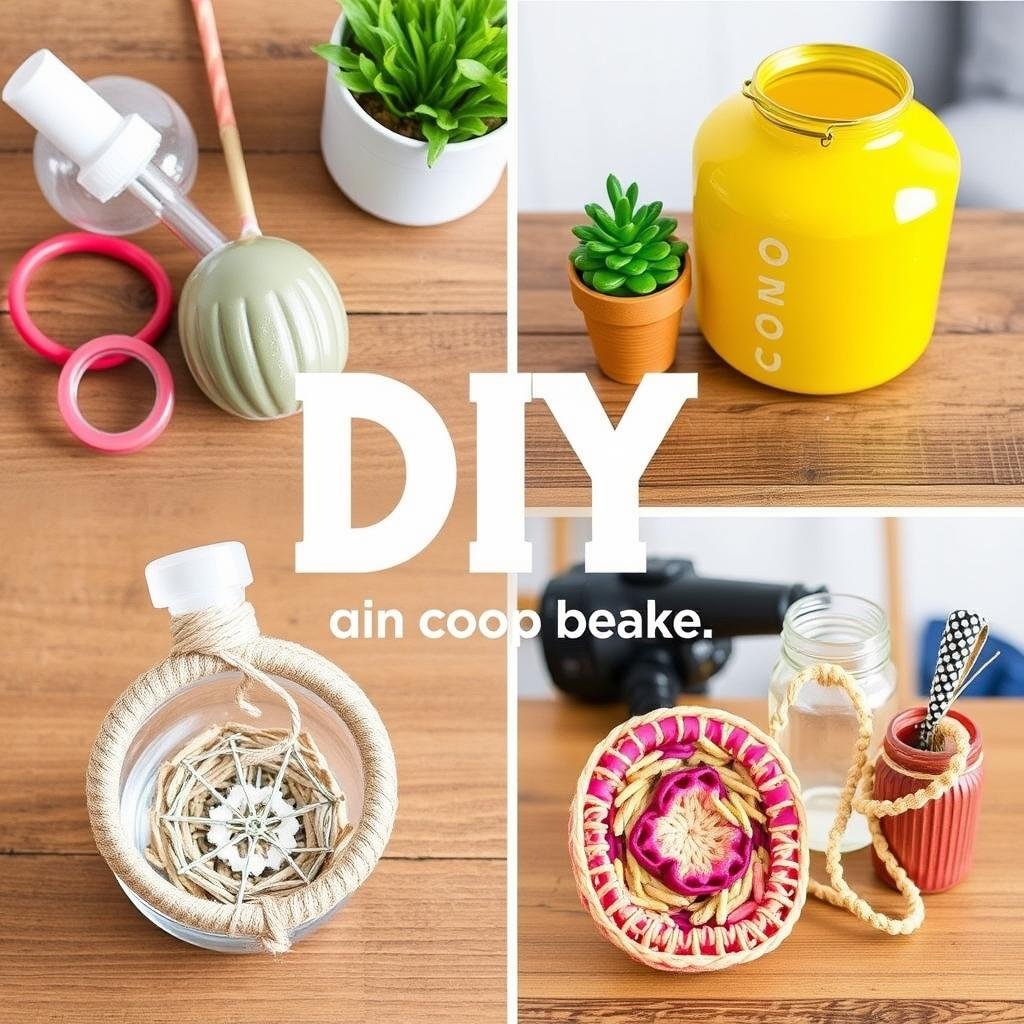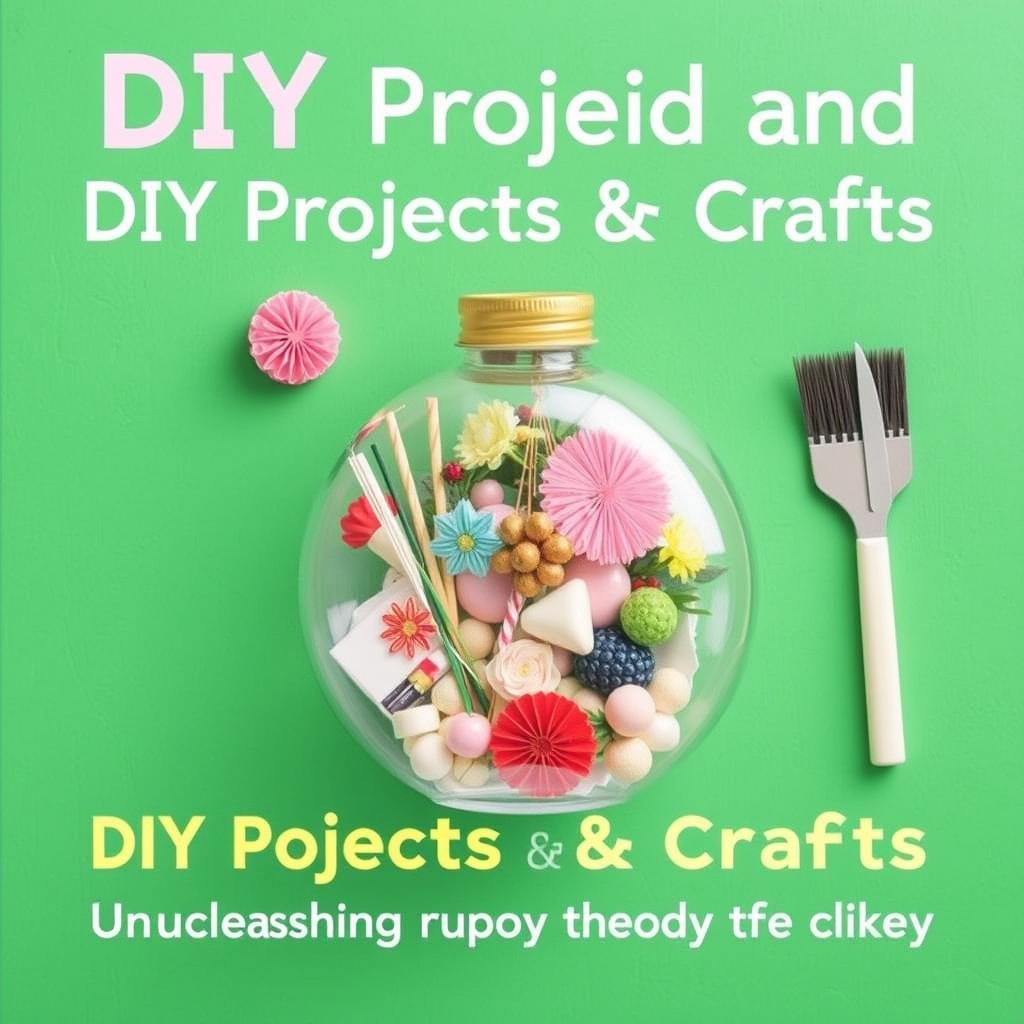DIY (Do-It-Yourself) projects and crafts are more than just hobbies—they’re a way to express creativity, save money, and add a personal touch to your home and life. Whether you’re a seasoned crafter or a beginner looking to explore new skills, there’s a world of possibilities waiting for you. From upcycling old furniture to creating handmade gifts, DIY projects can be both fun and rewarding. In this article, we’ll explore a variety of DIY ideas, share tips for getting started, and provide step-by-step guides to inspire your next project.
Why DIY? The Benefits of Crafting and Creating
Before diving into specific projects, let’s take a moment to appreciate the many benefits of DIY:
- Cost-Effective: DIY projects often cost less than buying new items, especially when upcycling or repurposing materials.
- Customization: You can tailor projects to your exact preferences, creating one-of-a-kind pieces that reflect your style.
- Sustainability: Repurposing old items reduces waste and promotes eco-friendly living.
- Skill Development: DIY projects help you learn new skills, from woodworking to sewing to painting.
- Stress Relief: Crafting can be a therapeutic activity that helps reduce stress and boost mental well-being.
- Personal Satisfaction: Completing a project gives you a sense of accomplishment and pride.
Essential Tools and Supplies for DIY Projects
Before starting any DIY project, it’s important to have the right tools and supplies on hand. Here’s a basic list to get you started:
Tools:
- Hammer
- Screwdrivers (flathead and Phillips)
- Measuring tape
- Utility knife
- Scissors
- Paintbrushes and rollers
- Sandpaper
- Hot glue gun
- Sewing kit
- Power drill (optional but useful)
Supplies:
- Paints (acrylic, spray, or chalk)
- Adhesives (glue, Mod Podge, etc.)
- Wood, fabric, or other materials specific to your project
- Nails, screws, and fasteners
- Decorative elements (ribbons, beads, buttons, etc.)


DIY Project Ideas for Every Skill Level
Beginner-Friendly Projects
1. Customized Tote Bags
Transform a plain tote bag into a stylish accessory using fabric paint, stencils, or iron-on transfers. This is a great way to practice basic painting or sewing skills.
Materials Needed: Plain tote bag, fabric paint, brushes, stencils (optional).
2. Photo Collage Wall Art
Create a personalized gallery wall by arranging framed photos, postcards, or artwork. You can also make your own frames using reclaimed wood or cardboard.
Materials Needed: Frames, photos, nails, hammer, adhesive strips.
3. Painted Mason Jars
Turn ordinary mason jars into decorative vases, candle holders, or storage containers using glass paint or spray paint.
Materials Needed: Mason jars, glass paint or spray paint, brushes.
4. DIY Coasters
Make your own coasters using tiles, cork, or wood. Decorate them with paint, washi tape, or resin for a unique look.
Materials Needed: Coaster blanks, paint, brushes, sealant.
5. Handmade Greeting Cards
Create personalized greeting cards using cardstock, stamps, and embellishments. This is a thoughtful and budget-friendly way to celebrate special occasions.
Materials Needed: Cardstock, stamps, ink, embellishments (stickers, ribbons, etc.).
Intermediate Projects
1. Upcycled Furniture
Give old furniture a new life with a fresh coat of paint, new hardware, or decorative accents. A dated dresser or chair can become a statement piece with a little creativity.
Materials Needed: Sandpaper, paint, brushes, new hardware (optional).
2. Macramé Wall Hanging
Learn the art of macramé to create a boho-inspired wall hanging. This project involves knotting cords to form intricate patterns.
Materials Needed: Macramé cord, wooden dowel, scissors.
3. Hand-Painted Planters
Add a pop of color to your garden or indoor space by painting terracotta pots with geometric designs or floral patterns.
Materials Needed: Terracotta pots, acrylic paint, brushes, sealant.
4. DIY Shelving
Build simple shelves using reclaimed wood or pre-cut boards. Floating shelves are a popular and practical option for displaying decor or storing books.
Materials Needed: Wood, brackets, screws, drill, level.
5. Sewn Throw Pillows
Create custom throw pillows by sewing fabric covers. Choose patterns and colors that complement your home decor.
Materials Needed: Fabric, sewing machine, thread, pillow inserts.
Advanced Projects
1. Custom Headboard
Design and build your own headboard using wood, fabric, or even reclaimed doors. This project can transform the look of your bedroom.
Materials Needed: Wood, fabric, batting, nails, staple gun.
2. Handmade Quilt
Quilting is a time-intensive but rewarding project. Create a quilt using fabric scraps or a coordinated fabric collection.
Materials Needed: Fabric, batting, thread, sewing machine, quilting tools.
3. DIY Light Fixtures
Craft your own pendant lights or lamps using materials like wire, wood, or glass. This project requires some electrical knowledge, so proceed with caution.
Materials Needed: Light kit, materials for shade (wire, wood, etc.), tools.
4. Reclaimed Wood Table
Build a rustic table using reclaimed wood. This project involves cutting, sanding, and assembling the wood, as well as adding a protective finish.
Materials Needed: Reclaimed wood, saw, sandpaper, screws, wood finish.
5. Handmade Jewelry
Create unique jewelry pieces using beads, wire, and other materials. This is a great way to express your personal style.
Materials Needed: Beads, wire, pliers, clasps.


Step-by-Step Guide: DIY Floating Shelves
Let’s walk through a popular and practical DIY project: building floating shelves. These shelves are perfect for displaying decor, books, or plants.
Materials Needed:
- Wooden boards (cut to desired size)
- Shelf brackets
- Screws
- Drill
- Level
- Sandpaper
- Paint or stain (optional)
Steps:
- Prepare the Wood:
- Sand the wooden boards to remove any rough edges or splinters.
- Paint or stain the boards if desired, and let them dry completely.
- Install the Brackets:
- Use a level to mark the desired height for your shelves on the wall.
- Attach the shelf brackets to the wall using screws and a drill. Make sure they are level and securely fastened.
- Attach the Shelves:
- Place the wooden boards on top of the brackets.
- Secure the boards to the brackets using screws from underneath.
- Style Your Shelves:
- Arrange books, plants, or decorative items on your new shelves.
Tips for Successful DIY Projects
- Start Small: If you’re new to DIY, begin with simple projects to build confidence and skills.
- Plan Ahead: Gather all materials and tools before starting a project to avoid interruptions.
- Follow Instructions: Read tutorials or watch videos carefully to understand each step.
- Be Patient: Take your time to ensure quality and avoid mistakes.
- Safety First: Wear protective gear like gloves and goggles when using tools or chemicals.
- Embrace Imperfections: DIY projects don’t have to be perfect—embrace the unique charm of handmade items.
Eco-Friendly DIY Ideas
1. Upcycled Planters
Turn old containers like tin cans, jars, or tires into planters for your garden or indoor plants.
Tip: Drill drainage holes in the bottom of containers to prevent waterlogging.
2. Reusable Shopping Bags
Sew your own reusable shopping bags using fabric scraps or old clothes.
Tip: Use sturdy fabric like canvas for durability.
3. DIY Cleaning Products
Make your own cleaning solutions using natural ingredients like vinegar, baking soda, and essential oils.
Tip: Store solutions in reusable spray bottles.
4. Repurposed Furniture
Transform old furniture into new pieces, such as turning a ladder into a bookshelf or a dresser into a kitchen island.
Tip: Sand and paint furniture to give it a fresh look.
5. Homemade Candles
Create eco-friendly candles using soy wax and reusable containers like mason jars or teacups.
Tip: Add essential oils for fragrance.
Conclusion
DIY projects and crafts offer endless opportunities to unleash your creativity, save money, and make a positive impact on the environment. Whether you’re upcycling old items, building something new, or creating handmade gifts, the process of crafting is as rewarding as the final result. By starting with simple projects and gradually tackling more complex ones, you’ll develop new skills and gain confidence in your abilities. So gather your tools, choose a project, and let your imagination run wild. Happy crafting!


